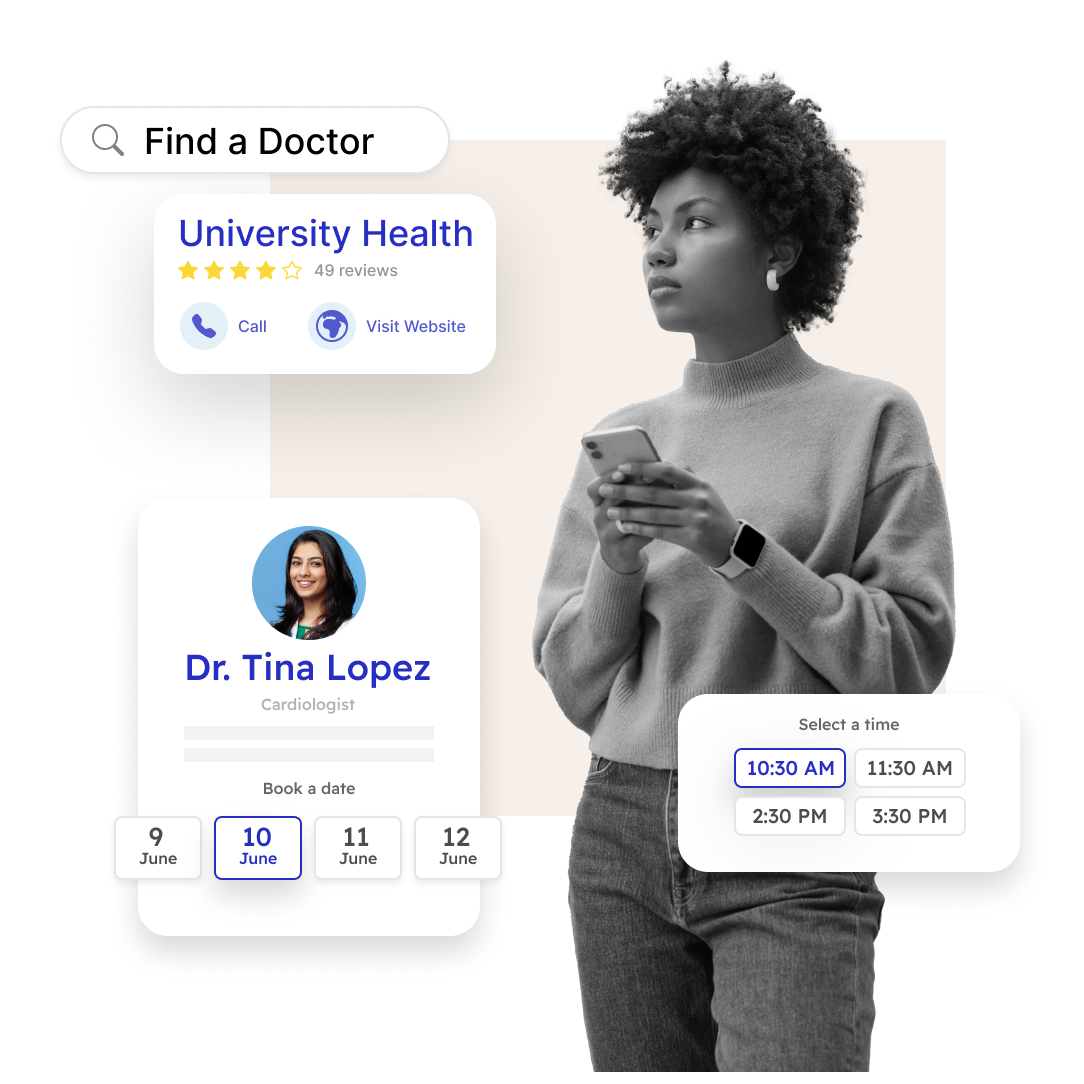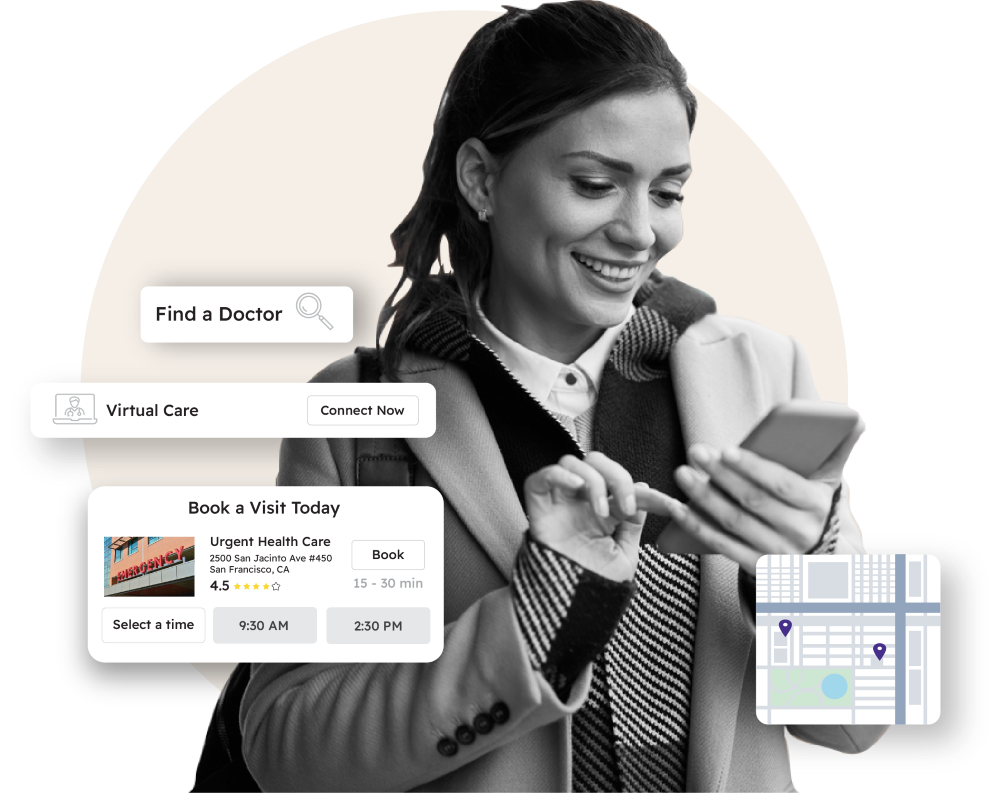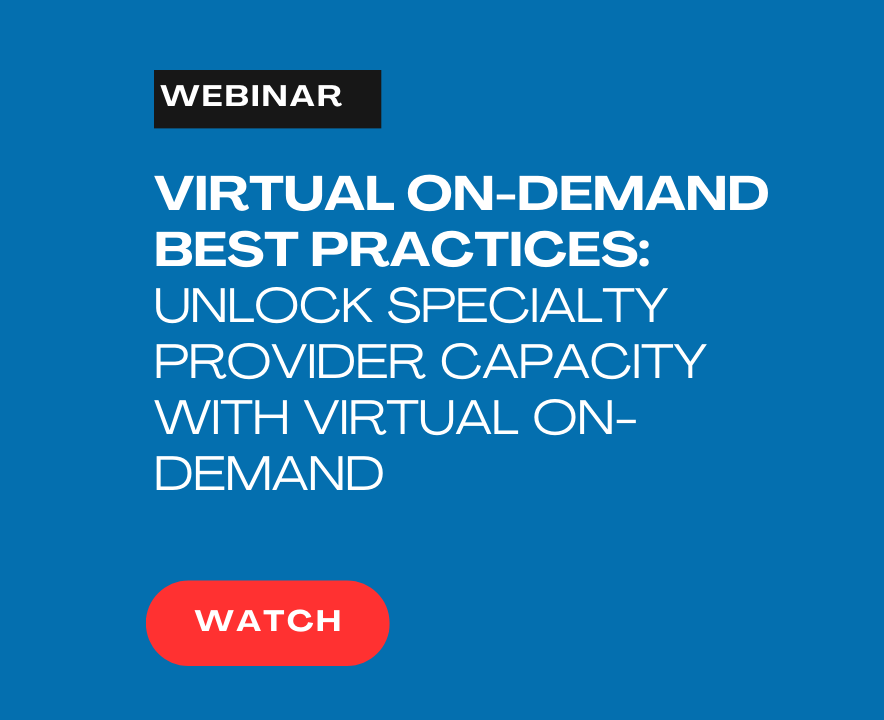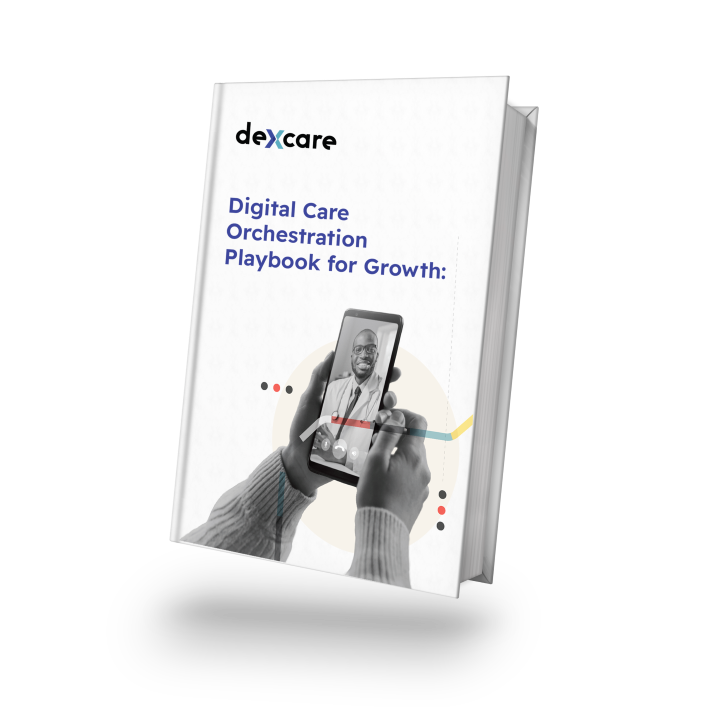How To Merchandise Healthcare: Proven Consumer Strategies that Move the Needle
 Introduction
Introduction
What if accessing healthcare could be as seamless as online shopping? This was the central question explored during a panel discussion moderated by Derek Streat, CEO at DexCare, at the recent Health Evolution Connect convening in Nashville.
The panel featured esteemed industry luminaries including Vickie White, chief brand and consumer officer at AdventHealth, Jeanine Maier, VP of consumer experience at Kaiser Permanente, and Winjie Miao, chief operating officer from Texas Health Resources. They shared invaluable insights on the digital strategies most effective at attracting consumers. A recurring theme discussed highlighted the adept use of merchandising technologies by their organization to create experiences that delight consumers and lead to system growth.
What is Merchandising in Healthcare?
Merchandising care is a strategic patient access approach that borrows from e-commerce best practices and offers a frictionless experience to help guide consumers to best-fit care across available providers, services, and modalities. Care options are personalized based on consumer intent and proximity to deliver a superior consumer experience – making appointment times easily discoverable, accessible, and convenient.
What’s the upshot? Patients easily find care tailored to their specific needs. And health systems better capture, convert, and retain patients while tightly orchestrating their limited resources to balance capacity with the demand for care. This results in greater efficiency, reduced costs, satisfied consumers, and increased downstream revenue.
Taking an Omnichannel Approach at AdventHealth
Vickie White shared that AdventHealth is integrating an omnichannel approach to its consumer experience strategy. They are evaluating how to provide the consumer-centric experience currently available on their app and expanding it across all channels. AdventHealth aims to do more than enable self-scheduling; they aspire to guide patients to appropriate care based on their specific symptoms, such as “I have flu-like symptoms” thus alleviating the burden on consumers to identify the avenue for best-fit care.
She also emphasized the importance of visual elements in healthcare marketing, moving away from sterile and intimidating images of ambulances and white coats to more consumer-friendly visuals that better reflect consumer health aspirations, a move to humanize healthcare and better align products and services with consumer desires.
AdventHealth’s strategy to win over consumers focuses on being easy to access, simple to use, and helping individuals “feel whole”, which is also their brand promise. They’re leveraging data intelligence and opt-ins to increase personalization based on the comfort level of the individual patient.
Creating Value for Patients and Clinicians at Kaiser Permanente
Jeanine Maier conveyed that at Kaiser Permanente, merchandising is evaluated through the lens of value for their patients and members, but also for their physicians and healthcare teams. She discussed how Kaiser has implemented DexCare’s on-demand virtual solution as a care option that delivers the value of ease and convenience to their members. “It’s like having a doctor in their pocket” via their smartphone. Furthermore, the virtual platform offers physicians the appreciated flexibility to work from home.
Kaiser is also optimizing capacity, and maximizing internal resources, by pulling other clinician types into the virtual on-demand queue – including nurses for lower acuity conditions that don’t require a physician. This saves time for patients and allows physicians to focus on the patients who most need their services.
To minimize the need for patients to make multiple visits Kaiser also focuses on a proactive and preventative-care approach. By leveraging data from electronic medical records, the system identifies existing preventative care gaps, such as mammograms or colorectal screenings, and addresses these during a patient’s scheduled appointment. This approach is uniform across all departments; even if a patient is visiting for an unrelated issue, they’re informed about pending preventative care. In addition, the Kaiser staff takes the initiative to schedule follow-up appointments, thereby reducing the burden on patients to manage their healthcare needs.
Tapping into Consumer Preferences and Segmentation at Texas Health Resources
Winjie Miao shared valuable insights into the ongoing challenge and opportunity of harmonizing fee-for-service and value-based healthcare. She emphasized that modern merchandising techniques effectively serve both models. For example, virtual urgent care is available as both a fee-for-service and a value-based offering at Texas Health Resources.
Texas Health Resources launched a virtual urgent care service that serves as an excellent example of this blended approach. Initially priced at $49.95 for a cash-pay visit, virtual urgent care was aimed at making healthcare accessible to a broader demographic, some of whom may not have insurance or access to traditional primary care. Intriguingly, a significant group of users turned out to be those who had other options to access care. For these individuals, the convenience outweighed the cost, proving that people are willing to pay for immediate and accessible care.
The healthcare industry has traditionally operated on a one-size-fits-all mentality, but the Texas Health Resources’ experience reveals the need for a more nuanced, consumer-focused approach. By diving into segmentation data, the organization discovered varying patient needs and preferences that are now informing their services. This can range from consumer segmentation to propensity modeling, all aimed at delivering personalized care.
AI Usage in Health Care
There was consensus in the room about the powerful combination of analog and digital to merchandise health care. More health systems are experimenting with AI to provide a better patient experience. When using AI, it’s important to think about the timing, intent, and how it is triggered. For example, Jeanine Maier shared that consumers consider AI acceptable if the organization initiates outreach. However, they are less receptive when they reach out and get an AI response.
At AdventHealth, automation is being tested for a key driver of inbound calls – medication refills. Consumers seem more open to using something new if it adds convenience or saves them time.
Key Takeaways
- It’s omnichannel: Healthcare providers are actively integrating omnichannel strategies, providing seamless consumer experiences across various touchpoints.
- Focus on creating value: Merchandising in healthcare is not just about self-scheduling – it’s about creating value for both consumers and healthcare providers.
- AI is an area for experimentation and learning. The industry needs to be strategic around the timing and outreach. Patients seem more open to AI if the health system uses AI for outreach, but less receptive if AI is used when the patient is reaching out to the health system. But AI may be appreciated for refills, or simple Q&A if it saves time. The technology is still exploratory at this stage.
- Embrace data intelligence. Leveraging data and segmentation fuels a personalized approach to digital engagement. Adopting a personalized approach builds trust and increases engagement. A one-size-fits-all approach doesn’t work.
- Your brand matters. Yes, some disruptors have strong brand equity, but so do health systems. While new players in healthcare may efficiently serve low-acuity care, they can’t offer the comprehensive, coordinated care that a longstanding, trusted brand can.
- Care navigation and load balancing. These are areas mentioned where health systems are doubling down and making further investments. It’s about managing the balance of delivering access to care while protecting precious system resources. And technologies, like DexCare, enable a new level of data visibility to balance both the demand and supply of care resources.
- Rapid prototyping. The panel echoed core tenets about innovation. We heard: Don’t be afraid to try new things; Start small, prove that it works; Scale; Don’t be afraid to fail; and test and learn allows you to be agile.
- Putting the consumer at the center. The healthcare industry has not yet developed the “muscle memory” for consumer-focused work. To successfully transition to a consumer-centric approach, healthcare providers need to dismantle existing processes and procedures and rebuild them around the consumer, which is acknowledged to be a challenging task.
Conclusion
As healthcare evolves, merchandising strategies offer a roadmap to create a more consumer-focused approach. With the right partnerships and innovation, healthcare providers can offer a seamless experience that attracts and retains consumers.






